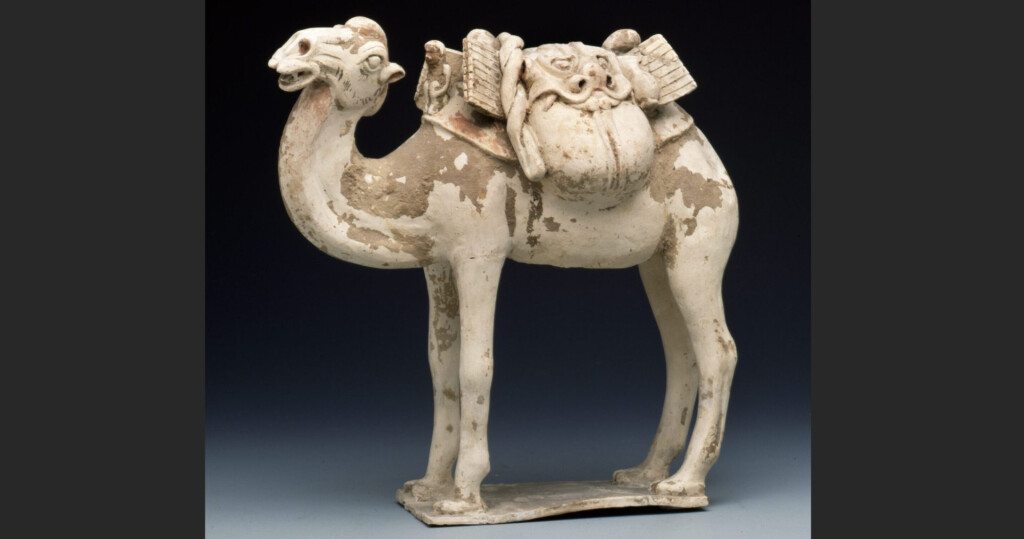Exhibition: How China's artisans became Europe's inspiration

The "Inspiration China" exhibition at Hamburg's "Museum für Kunst und Gewerbe" displays a unique collection of Chinese craftsmanship. Their perfection once inspired Europe's artisans. Table.Briefings spoke with Curator Wibke Schrape about the concept behind the newly designed exhibition.
It was perfection that once fascinated collectors, artists, museums and business people in Europe so much about Chinese craftsmanship. This inspired local art connoisseurs. For example, they ordered a traditional Bavarian beer stein from the artisans – so-called export porcelain. Other works, however, might surprise visitors. For example, various motifs of camels, which were much more common in China than often assumed in Europe due to the Silk Road.
Ms. Schrape, the title of the exhibition is "Inspiration China." Who inspires whom?
Ideally, we want to inspire visitors to the "Museum für Kunst und Gewerbe Hamburg". However, the title refers to the character of the collection. It was created in 1873 for the Vienna World Exhibition and serves as a model for local artisans. At that time, people began to collect East Asian objects specifically as a source of inspiration and role models. It was also a reaction to industrialization, where there was a feeling that design was stagnating and craftsmanship was losing quality. The aim was to counteract this with inspiring examples of technique, materials and motifs.
There used to be an East Asia exhibition. Now it is divided into Japan, Korea, Buddhism and China. The only common denominator is now Buddhism.
The Buddhism area displays exhibits from East and Central Asia together, including Chinese pieces. But in the other rooms, too, we repeatedly highlight transcultural relationships between East Asian design traditions. In the China exhibition, specific beliefs also play a role. For example, we have highlighted ancestor worship, which still shapes Chinese society today.
Porcelain connects East Asia and Europe
How can you tell that you are entering the Chinese section of the museum?
At the entrance, we actually start with pieces that people strongly associate with Chinese art – blue and white porcelain. But we have also placed a jug from Meissen in the display case. This highlights the transcultural relationship between East Asian and European design.
Would people from China also perceive this as Chinese art?
We probably should start a survey on this. What is important is to distinguish between export porcelain and porcelain created for the indigenous market. Porcelain from the imperial workshops for the imperial court is held in higher esteem in China – and in Europe today – than export porcelain. Porcelain from the imperial workshops that was designed for the emperor is unparalleled in its quality.
What would be a piece that breaks with common clichés?
It always depends on what visitors associate with China. Our aim is to focus on the design itself, to highlight the exceptional quality and perfectionism of the pieces. Perhaps some people may be surprised by the camel figurines. Camels are not necessarily the first animals associated with China. In the Tang Dynasty, however, they were an essential part of court culture, representing the flourishing trade along the Silk Road.
Which exquisite piece is looted art?
Your China collection at the Museum für Kunst und Gewerbe Hamburg comprises 3,000 pieces. How do you choose which one goes into the exhibition?
Yes, that is a big challenge and a great pleasure at the same time. We have taken into account the reception of China, which has changed over the decades. We also highlight the strengths of the collection and the most important pieces. We also show new things, like cloisonné, a special technique for enamel work. As a design museum, we also focus on the design principles and foundations of visual and material art and culture in China in this new installation.
The origin of the pieces is another important issue.
Selected items that we have looked into are marked with an orange triangle. We aim to create transparency. In addition to a possible connection between the pieces and the Nazi era, the colonial acquisition context is also important, for example. Together with six other German museums and the Palace Museum in Beijing, we are searching for and researching looted art such as "Traces of the 'Boxer War' in German museum collections."
Which piece do you wish you could take home with you?
There are, of course, pieces that I absolutely adore, but that I don't want to have at home because they are simply too valuable. Perhaps I would choose one of the Ai Weiwei chairs that he brought to Germany for Documenta in 2007 so that people could relax on them and reflect on what they had seen. They also serve the same purpose now in this exhibition. They date back to the Qing dynasty, are beautifully crafted, and keep adding more and more stories through their continued use.
Letzte Aktualisierung: 24. Juli 2025
